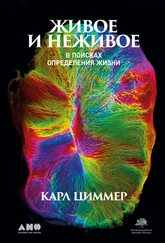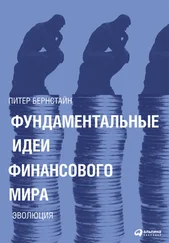Andersson M.B. Sexual selection . Princeton, N.J.: Princeton University Press, 1994.
Andrade M.C.B. “Sexual selection for male sacrifice in the Australian redback spider.” Science , 1996, 271: 70–72.
Birkhead T.R. Promiscuity: An evolutionary history of sperm competition . Cambridge: Harvard University Press, 2000.
____, Møller A.P. Sperm competition and sexual selection . San Diego & London: Academic Press, 1998.
Boesch C., Boesch-Achermann H. The chimpanzees of the Tax Forest: Behavioural ecology and evolution . Oxford & New York: Oxford University Press, 2000.
Cronin H. The ant and the peacock: Altruism and sexual selection from Darwin to today . New York: Cambridge University Press, 1991.
Dawkins R. The selfish gene . New York: Oxford University Press, 1976.
Dusenbery D.B. “Selection for high gamete encounter rates explains the success of male and female mating types.” Journal of Theoretical Biology , 2000, 202: 1-10.
Gould J.L., Gould C.G. Sexual selection . New York: Scientific American Library/Freeman, 1989.
Haig D. “Genetic conflicts in human pregnancy.” Quarterly Review of Biology , 1993, 68: 495–532.
Hausfater G., Hrdy S.B. Infanticide: Comparative and evolutionary perspectives . New York: Aldine, 1984.
Holland В., Rice W.R. “Experimental removal of sexual selection reverses intersexual antagonistic coevolution and removes a reproductive load.” Proceedings of the National Academy of Sciences , 1999, 96: 5083–5088.
Hrdy S.B. Mother nature: A history of mothers, infants, and natural selection . New York: Pantheon Books, 1999.
Meller А.Р., Swaddle J.P. Asymmetry, developmental stability, and evolution . Oxford: Oxford University Press, 1997.
Petrie M. “Improved growth and survival of offspring of peacocks with more elaborate trains.” Nature , 1994, 371: 598–599.
____, Krupa A., Burke T. “Peacocks lek with relatives even in the absence of social and environmental cues.” Nature , 1999, 401: 155–157.
Pizzari Т., Birkhead T.R. “Female feral fowl eject sperm of sub-dominant males.” Nature , 2000, 405: 787–789.
Rice W.R. “Sexually antagonistic male adaptation triggered by experimental arrest of female evolution.” Nature , 1996, 381: 232–234.
Ridley M. The Red Queen: Sex and the evolution of human nature . New York: Penguin Books, 1995.
de Waal F.B.M. Chimpanzee politics: Power and sex among apes . Baltimore, Md. & London: Johns Hopkins University Press, 1998.
____ Good natured: The origins of right and wrong in humans and other animals . Cambridge, Mass.: Harvard University Press, 1996.
____, Lanting F. Bonobo: The forgotten ape . Berkeley, Calif.: University of California Press, 1997.
Welch A.M., Semlitsch R.D., Gerhardt H.C. “Call duration as an indicator of genetic quality in male gray tree frogs.” Science , 1998, 280: 1928–1930.
Wrangham R.W. “Subtie, secret female chimpanzees.” Science , 1997, 277: 774–775.
____, Peterson D. Demonic males: Apes and the origins of human violence . Boston: Houghton Mifflin, 1996.
Глава 11: Разговорчивая обезьяна
Allman J.M. Evolving brains . New York: Scientific American Library/ Freeman, 1999.
Barkow J.H., Cosmides L., Tooby J. The adapted mind: Evolutionary psychology and the generation of culture . New York: Oxford University Press, 1992.
Baron-Cohen S., Tager-Flusberg H., Cohen D.J. Understanding other minds: Perspectives from developmental cognitive neuroscience . Oxford & New York: Oxford University Press, 2000.
Buss D.M. The dangerous passion: Why jealousy is as necessary as love and sex . New York: Free Press, 2000.
____ Evolutionary psychology: The new science of the mind . Boston & London: Allyn & Bacon, 1999.
____, Haselton M.G., Shackelford Т.К., Bleske A.L., Wakefield J.C. “Adaptations, exaptations, and spandrels.” American Psychologist , 1998, 53: 533–548.
Cosmides L. “The logic of social exchange: Has natural selection shaped how humans reason? Studies with the Wason selection task.” Cognition , 1989, 31: 187–276.
Coyne J.A., Berry A. “Rape as an adaptation.” Nature , 2000, 404: 121–122.
Cummins D.D., Allen С. The evolution of mind . New York & Oxford: Oxford University Press, 1998.
Darwin C. The descent of man and selection in relation to sex . London: John Murray, 1871.
Deacon T.W. The symbolic species: The co-evolution of language and the brain . New York & London: Norton, 1997.
Dunbar R.I.M. Grooming, gossip and the evolution of language . London: Faber & Faber, 1996.
Emlen S.T. “An evolutionary theory of the family.” Proceedings of the National Academy of Sciences , 1995, 92: 8092–8099.
Fitch W.T. “The evolution of speech: A comparative review.” Trends in Cognitive Sciences , 2000, 4: 258–267.
Gagneux P., Wills C., Gerloff U., Tautz D., Morin P.A., Boescb C., et al. “Mitochondrial sequences show diverse evolutionary histories of African hominoids.” Proceedings of the National Academy of Sciences , 1999, 96: 5077–5082.
Gould S.J. “The pleasures of pluralism.” New York Review of Books , June 26, 1997, 46–52.
____, Lewontin R.C. “The spandrels of San Marco and the Panglossian paradigm: A critique of the adaptationist programme.” Proceeding of the Royal Society of London Series B, 1979, 205: 581–598.
Hare В., Call J., Agnetta В., Tomasello M. “Chimpanzees know what conspecifics do and do not see.” Animal Behaviour , 2000, 59: 771–785.
Hauser M. Wild minds: what animals really think . New York: Henry Holt, 2000.
Holden C. “No last word on language origins.” Science , 1998, 282: 1455–1459.
Hrdy S.B. Mother nature: A history of mothers, infants, and natural selection . New York: Pantheon Books, 1999.
Johanson D.C., Edgar B. From Lucy to language . New York: Simon & Schuster, 1996.
Kegl J. “The Nicaraguan sign language project: An overview.” Signpost , 1994, 7: 24–31.
____, Senghas A., Coppola M. “Creation through contact: Sign language emergence and sign language change in Nicaragua.” In: DeGraff M., ed., Language contact and language change: The intersection of language acquisition, Creole genesis, and diachronic syntax . Cambridge, Mass.: MIT Press, 1999, pp. 179–237.
Klein R.G. The human career: Human biological and cultural origins . Chicago: University of Chicago Press, 1999.
Miller G.F. The mating mind: How sexual choice shaped the evolution of human nature . New York: Doubleday, 2000.
Nowak M.A., Krakauer D.C. “The evolution of language.” Proceedings of the National Academy of Sciences , 1999, 96: 8028–8033.
____, Krakauer D.C., Dress A. “An error limit for the evolution of language.” Proceedings of the Royal Society of London, Series B: Biological Sciences , 1999, 266: 2131–2136.
O’Connell J.F., Hawkes K., Blurton Jones N.G. “Grandmothering and the evolution of Homo erectus.” Journal of Human Evolution , 1999, 36: 461–485.
Osborne L. “A linguistic big bang.” New York Times Magazine , October 24, 1999: 84–89.
Penton-Voak I.S., Perrett D.I., Castles D.L., Kobayashi Т., Burt D.M., Murray L.K., et al. “Menstrual cycle alters face preference”. Nature , 1999, 399: 741–742.
Читать дальше
Конец ознакомительного отрывка
Купить книгу
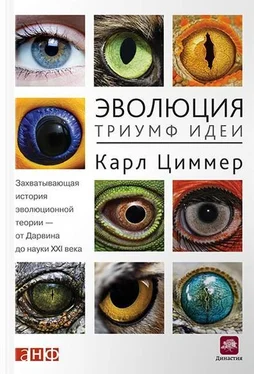
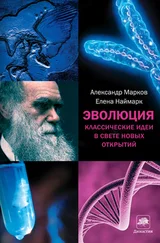


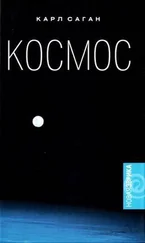
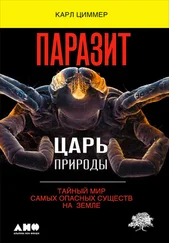
![Карл Циммер - Паразит – царь природы [Тайный мир самых опасных существ на Земле] [litres]](/books/396828/karl-cimmer-parazit-car-prirody-tajnyj-mir-sam-thumb.webp)
![Карл Циммер - Она смеется, как мать [Могущество и причуды наследственности] [litres]](/books/406077/karl-cimmer-ona-smeetsya-kak-mat-moguchestvo-i-pr-thumb.webp)
